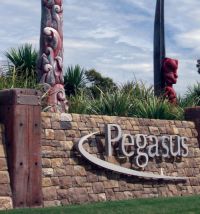Building mana whenua partnerships for urban design

Māori and local authorities have made huge strides in developing and fostering positive working relationships, particularly since the passing of the Resource Management Act in 1991. However, 20 years later there still remains a high degree of frustration at the lack of Māori perspectives and knowledge in planning and policy. This lack of incorporation of Māori knowledge (mātauranga Māori), values, and active involvement is particularly evident in urban environments where 85% of Māori now live.
The Kaitiakitanga of Urban Settlements research programme addresses knowledge gaps in the urban planning environment by producing mātauranga-Māori-based frameworks, methods and tools to facilitate the inclusion of mātauranga Māori in planning practice and to build Māori and iwi/hapū capacity.
It has also established a national network of talented Māori researchers and practitioners that are making a significant contribution around Aotearoa New Zealand in mātauranga- Māori-based planning and urban design. It has developed a pātaka (storehouse of tools and processes) that can be used by planners and iwi/hapū resource managers to increase the use of and evaluate the incorporation of mātauranga Māori in decision-making, policy and plans.
An assessment framework (and processes) that can be used by planners, developers and iwi/hapū resource managers to plan and evaluate the incorporation of mātauranga Māori within decision-making, policy, planning and development has also been developed by the research programme.
Researcher Shaun Awatere says the following key findings emerged from the project:
- The key to successful implementation of kaitiakitanga in urban settlements is positive relationships between iwi/hapū/whānau, property developers, community groups, and local government that have beneficial outcomes for all agents involved.
- Urban development projects need working groups that include a skilled iwi/hapū representative who is continuously active in the project, well-resourced and involved in monitoring the implementation of mātauranga- Māori-based design solutions.
- Mātauranga Māori is context specific and needs to be tailored to solving specific issues within specific geographic areas, under the guidance of mana whenua. Through this research, however, we have found certain elements and processes that, if adhered to, can lead to the effective incorporation of mātauranga Māori into urban planning. A genuine attempt at recognising kaitiakitanga in urban development will consider the worldview of iwi/hapū together with the sustainability goals of local government.
Note: This guide is extracted from a paper ‘Kaitiakitanga o ngā ngahere pōhatu’ (Kaitiakitanga of urban settlements) published in December 2011.
